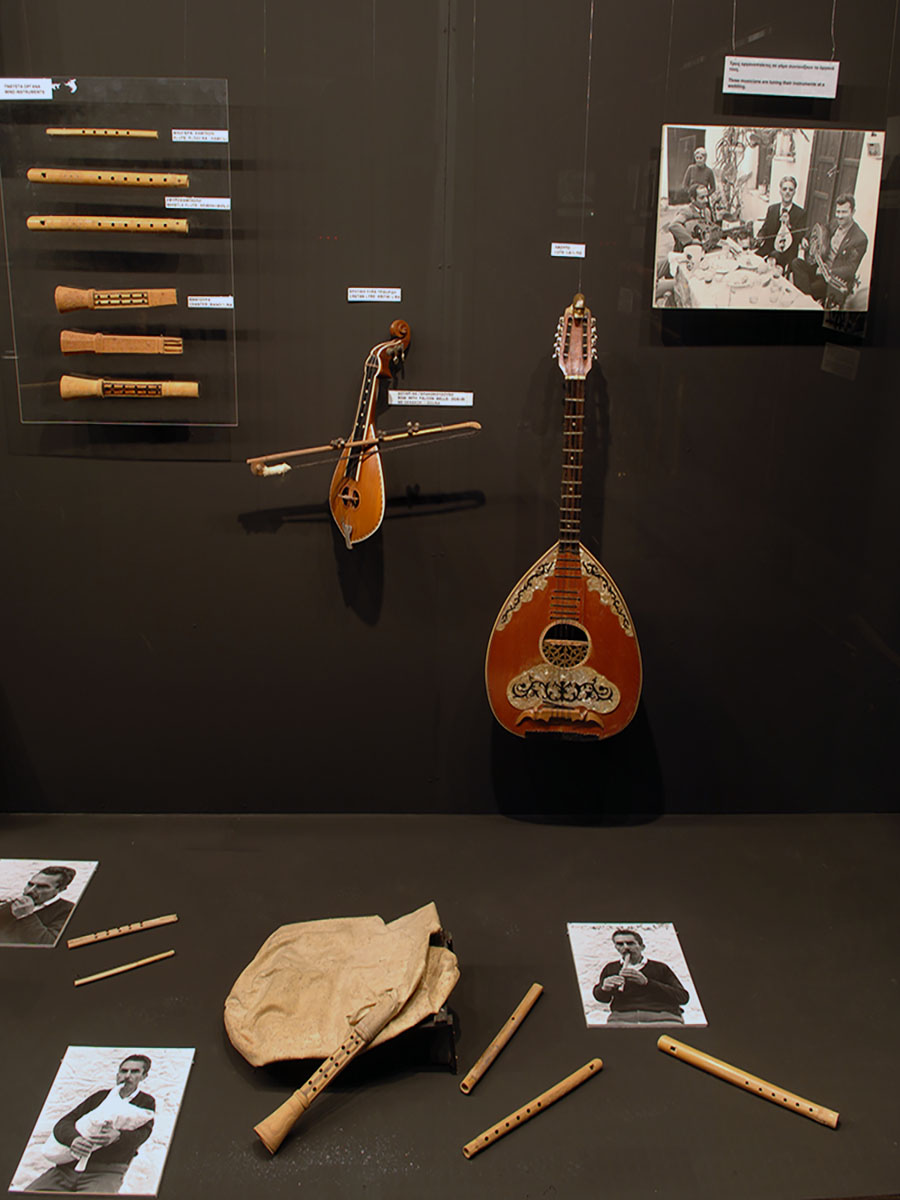Exhibition
Presentation Of Exhibits By Section
Music
The first human artistic expression is believed to have been musical, with song and musical instruments.
Wind instruments
Habioli: a fine pipe, 8-9 mm. in diameter and about 20 cm. long, with five holes bored in it and a notch at the mouthpiece.
Sfyrohabiolo: a longer, thicker pipe, with a whistle and hole at the mouthpiece. It once had five holes, now increased to six. On the underside is another hole for changing scale. It is a typical ancient Greek instrument called a “diaulos”, as it had two “auloi” (pipes).
Askomandoura (bagpipes): a bag of ram’s skin with the two front legs attached. In one is placed a wooden pipe containing two habiolia, while in the other is a fine bone mouthpiece. The player blows rhythmically through the mouthpiece to inflate the bag and squeezes it to produce a continuous drone from the pipes. The instrument, like the two preceding, is used in herding communities worldwide.

Stringed instruments
Cretan lyre: this is a sort of pear-shaped, flattened, three-stringed violin, played with a bow. The strings are not fingered by pressing but pushed with the surface of the nails on the left hand. The lyre sounds very like a violin.
Lute: a large instrument with a pear-shaped body resembling the medieval lute. It has four pairs of strings plucked with a vulture’s feather. It is used to accompany the lyre.
In East Crete the violin is used instead of the lyre. Other musical instruments from mainland Greece are very rarely found in Crete.
